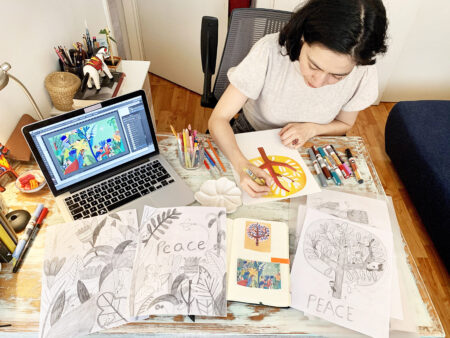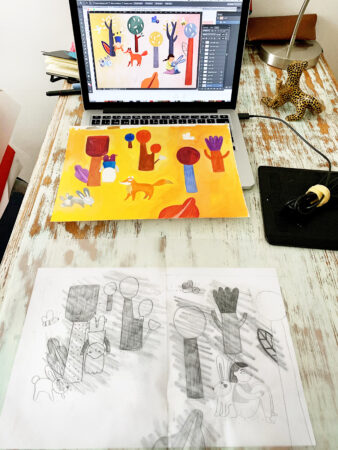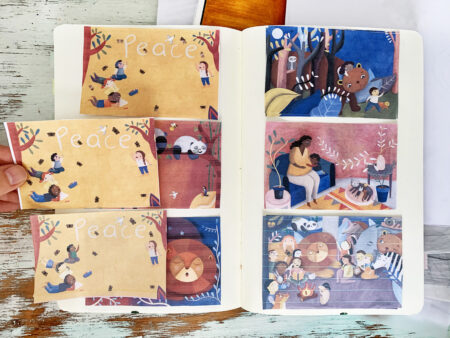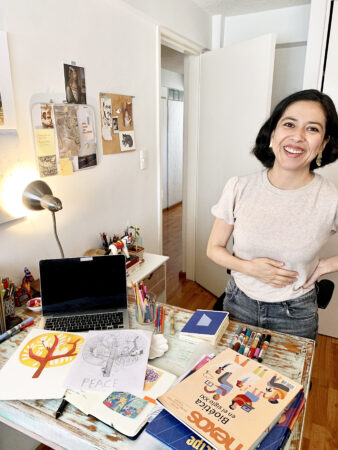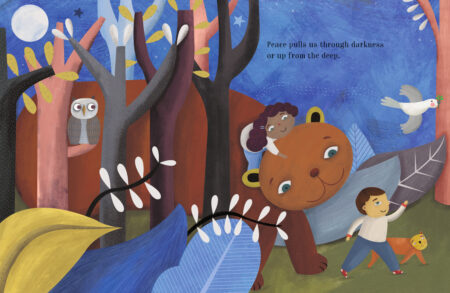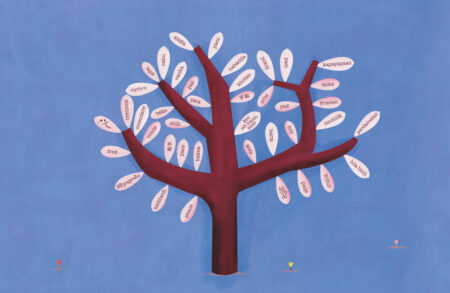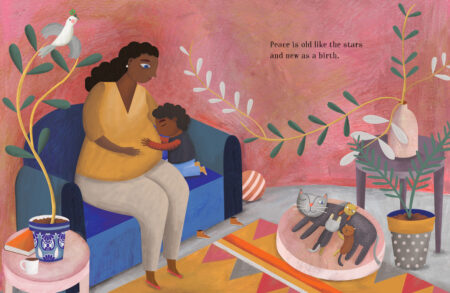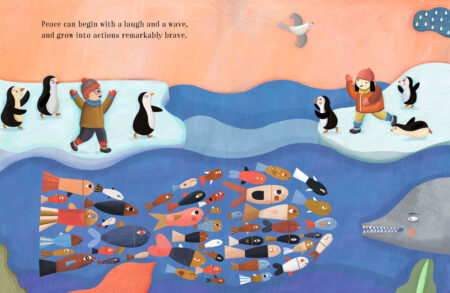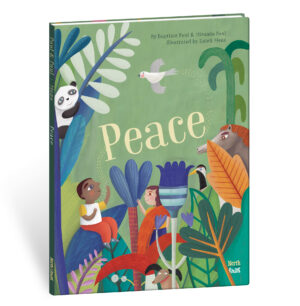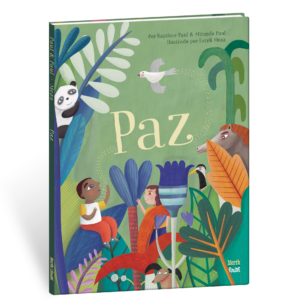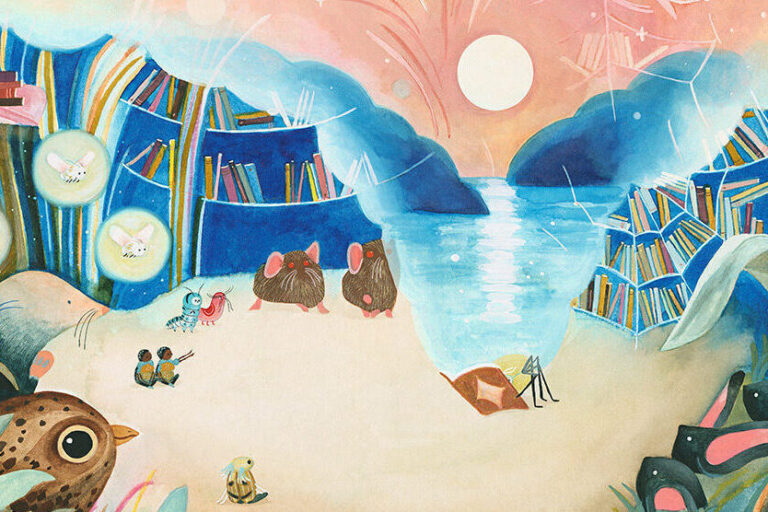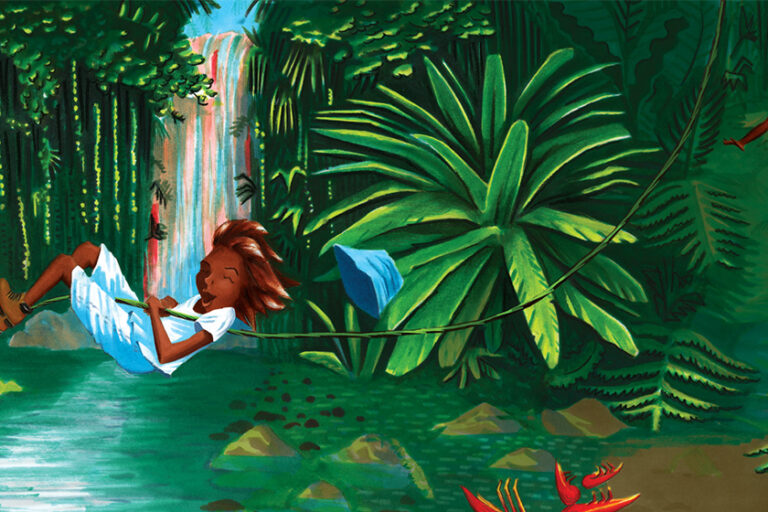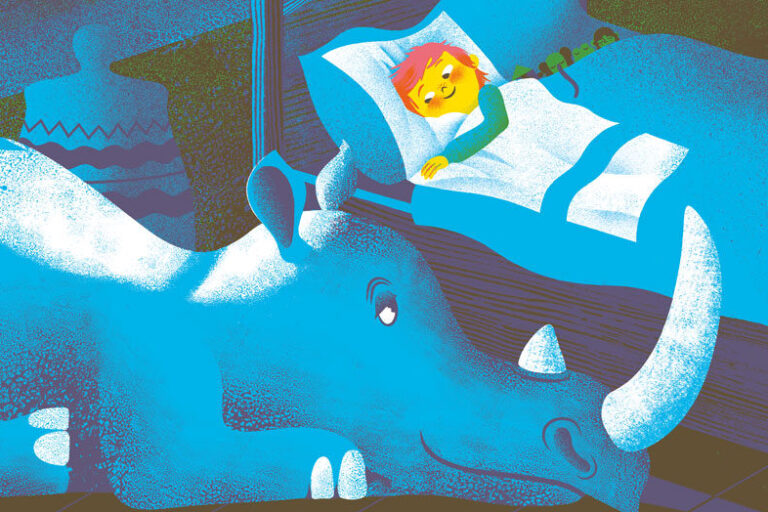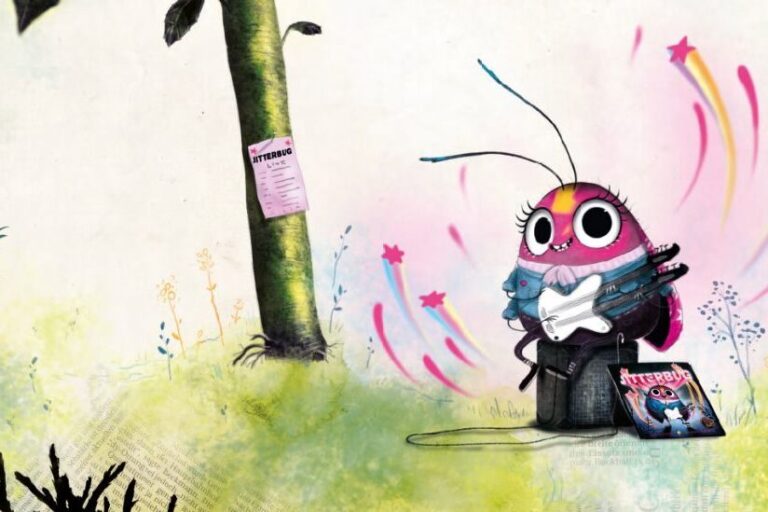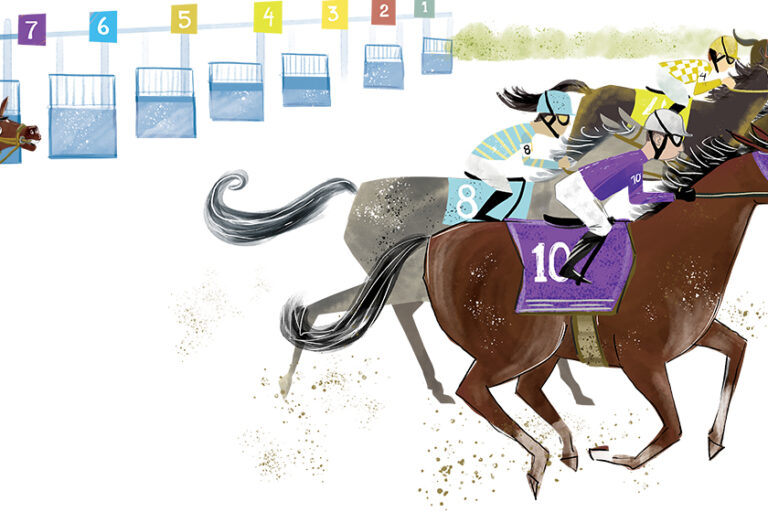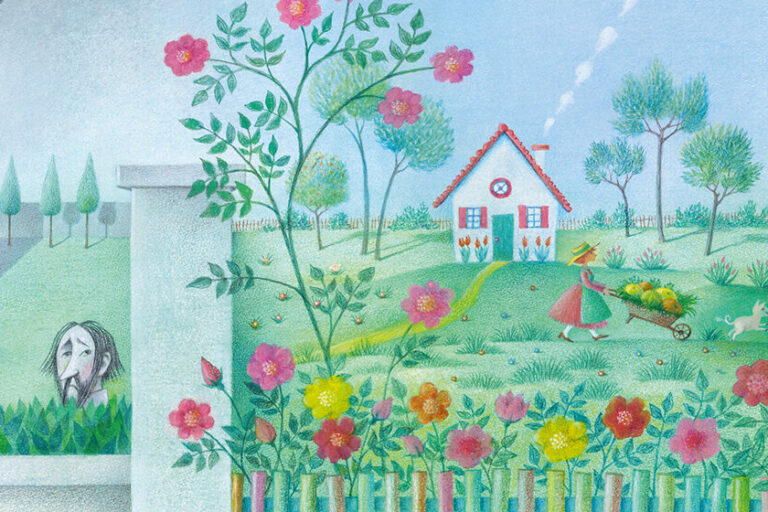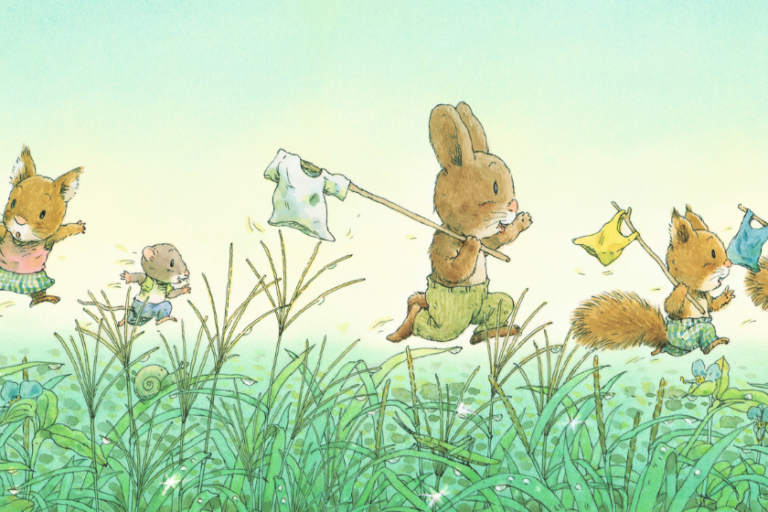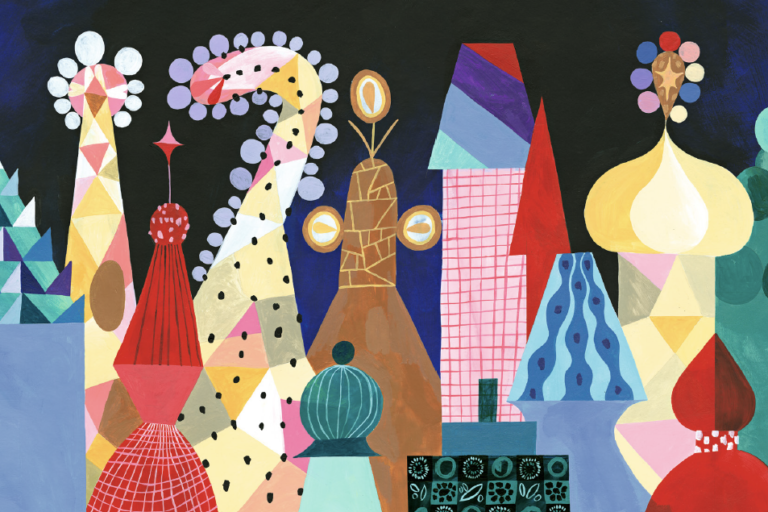This book is a hug in times when hugs are impossible
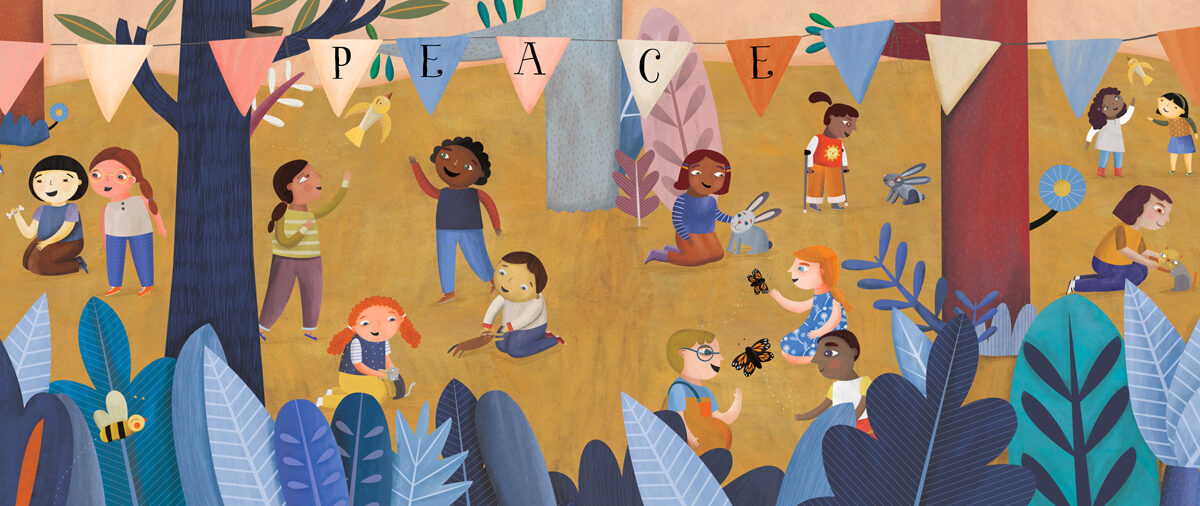
Interview with Estelí Meza, illustrator of Peace
Estelí Meza is the Mexican illustrator of Peace, written by Baptiste Paul (The Field, Climb On!) and Miranda Paul. In Mexico she has received several awards for her work and is now making her international debut. Peace talks about creating peace in our small and everyday actions. Meza illustrated the book during the Covid-19 pandemic, and the message speaks to the universality of humanness and hope in the face of global loss. Our colleague Julia Ann Stüssi at NordSüd Verlag met Estelí in Mexico City and spoke to her about creating the artwork for this book.
We are happy to present Peace, your first book with NorthSouth. Tell us about the circumstances of making this book.
I received the manuscript from NorthSouth Books and immediately connected to the text. I knew I wanted to draw children and animals in different contexts. When I was starting to work on the colors in my illustrations the lockdown hit Mexico City. My husband and I have barely left our flat in the following months. Luckily, I am used to working at home, where I have my small studio space. While this huge city was affected by the virus and the world seemed apocalyptic, I focused on the beautiful message of Peace.
Why is this book important?
Well, we all need peace. Especially in these times that are even more challenging for children. I wanted my Illustrations to be a gift to make them feel hopeful. I wanted them to feel accompanied and let them know that something good will come of any crisis if we take care of each other. This was my intention: To give them a safe space of hope. Maybe the book is like a hug for the reader. It is a way of hugging in a moment where actual hugs are not possible.
I wanted my Illustrations to be a gift to make [children] feel hopeful.
Estelí Meza
How did you translate this message into your illustrations?
I believe peace is strongly related to how we interact with our surroundings. We tend to only think about ourselves and not see the world around us. I am really interested in the caring relationship between children and animals – that love that comes so easy to them. Diversity is also very important: The children in this book come from all over the world, with all types of skin colors and ethnicities, the animals stand for different countries and continents. For Mexico I drew the monarch butterflies, there are cranes that are associated with Asia, the lion for Africa and so on. I knew I wanted a book with warm colors, reds and yellows that transition towards the nightfall at the end.
Are there any special things to discover?
Yes, there are many details in my book that children notice quickly, for example a little story of two cats: they appear on different pages, and although you never see them together, in the end suddenly there are kittens whose fur is a mix of the color pattern of both adult cats. Also: every child appears at least twice.
Do you have a cat? I saw something moving just now in the background…
Yes! We adopted her during lockdown. She is very shy and her name is MascaritaSagrada (little holy mask), which is the name of a fighter of the mini lucha libre, the Mexican wrestlers. The fighters wear their famous masks. Did you ever notice that many cats have a pattern in the form of an “M” above their eyes?
How do you begin your creative work?
I sketch a lot in the beginning. To loosen my mind, I draw with my left hand instead of my right and see what happens. I try to surprise myself having the basic ideas in mind, in this case diversity, peace, friendship, cooperation, caring. (quote) Then I set a color palette. Generally, I work with pencils, felt pens and acrylic markers. I make small scale pencil sketches of the images to see them in a storyboard and analyze how the story flows. Then I make bigger pencil sketches for all the detail. If I want to make any changes, I use vellum paper to trace and transfer them – this also means very clean images afterwards.
How are you mixing these analog techniques with digital ones?
When I start with colors, I paint the big surfaces first. In this book I mixed acrylic markers and color pencils to get the texture I like. I scan these background images and edit all the smaller elements digitally with Photoshop. This way I can easily change things a play with composition and detail. Then I print small images for an advanced miniature storyboard in order to see how they connect and keep adapting them. I actually glue the newer version on top of the previous one to be able to compare them. In recent years I have been mixing analog and digital techniques, I really love working this way. They combine well and the overall impression is neither completely digital, nor completely traditional.
You were born in Mexico City, where you still live today. What do you consider Mexican about your drawings?
I guess what is seen as the most “Mexican” part of my work is my use of color. In my new book I chose a very radiant palette, and I guess that’s just in my blood as a Mexican: If you go to the market or out on the streets everything is so colorful here, the sunlight is strong. I also love to draw animals and plants, I find them very expressive. I wonder if this has to do with Mexico, where we are surrounded by tropical plants even here in the city.
You have a beautiful, special name. What is the meaning of “Estelí”?
Estelí is a city in Nicaragua. I don’t have any connections to the country, but my parents loved the meaning of this word: River of Flowers.
What makes you feel at peace?
You know, Mexico is beautiful but it is also a complicated country, just watching the news one witnesses terrible things. So you need a coping mechanism. Humor is very important, it has a cleansing function, channels difficult energies. What brings me peace is clearly one thing: Drawing. Just having a sketchbook and a pencil in my hands makes me feel at peace. Also talking to people I love, knowing that they are well. Listening to music, reading, looking at paintings and drawings, enjoying a cup of coffee with a pastry – these are the moments where I am at peace.
